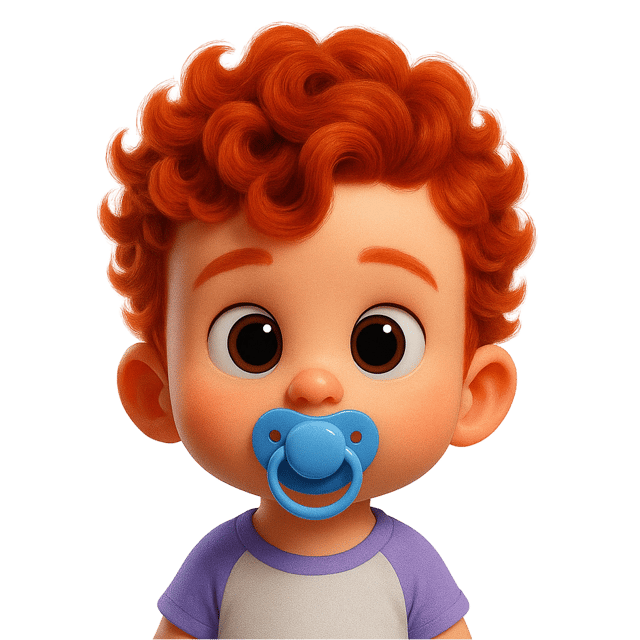
Baby hair color calculator
Predict hair color
More informations about your future baby? So try:
Hair color calculator
Click on each character to select the color of his hair:
Grand Mother

Unknown
Grand Father

Unknown
Grand Mother

Unknown
Grand Father

Unknown

Unknown

Unknown
Hair color probability:
How the baby hair color calculator works
How to Use the Baby Hair Color Predictor
Step-by-Step Instructions
- Select the Parents’ Hair Colors: Start by choosing the natural hair colors of both parents using the dropdown menus. You can select from Very Blond, Blond, Red, Brown, and Black. If you're not sure about one, choose 'Unknown' to proceed.
- Add Grandparents’ Hair Colors (Optional): For more accurate results, you may enter each grandparent’s hair color. This allows the model to factor in recessive traits that might not appear in the parents. 'Unknown' is available if you lack this information.
- View Your Prediction Instantly: After selecting the hair colors, the tool calculates probabilities automatically. No need to submit—the result updates in real time as you enter data.
Understanding Your Prediction Results
- Probability Chart: The prediction is shown as a chart that displays the likelihood of each possible hair color, based on inherited traits from parents and grandparents.
- Hair Color Categories:
- Very Blond: Extremely light hair, often seen in Northern European ancestry.
- Blond: Light yellowish tone, less pale than Very Blond.
- Red: A rare color linked to specific recessive gene combinations.
- Brown: A common natural shade with moderate pigmentation.
- Black: The darkest hair color, rich in eumelanin.
- Tips for Interpreting Results:
- High Probabilities: A higher percentage means this hair color is more genetically likely, though not certain.
- Low Probabilities: Lower values still indicate a possibility—genetic variation allows for unexpected outcomes.
- Handling Unknown Hair Colors: If some family hair colors are marked as 'Unknown', the model adapts using the rest of the data. Predictions remain valid, but may be less specific.
- Disclaimer: This tool is built on genetic inheritance theories, but actual hair color may vary. Hair pigmentation is influenced by many genes, and can also be affected by age or external conditions.
Understanding the Hair Color Prediction Method
"A Modern Genetic Approach to Forecasting Baby Hair Color".
Our tool for predicting hair color leverages a refined genetic framework that goes beyond simple Mendelian diagrams. By using an updated dominance structure and a full range of natural hair shades—from Very Blond to Black—it offers a more realistic estimation of your baby's potential hair color.
The prediction model evaluates inherited alleles from both parents and their parents. It simulates all possible genetic combinations and applies a hierarchy of dominance to estimate the most likely hair color outcome. This system captures the complexity of hair color genetics far better than classic, oversimplified models.
Main Advantages of This Model:
- Expanded Hair Color Range: The tool recognizes multiple shades including Very Blond, Blond, Red, Brown, Black, and Unknown, offering a nuanced prediction.
- Advanced Allele Dominance Logic: Hair colors are calculated using a structured dominance order, allowing for more precise forecasts.
- Grandparent Traits Included: By factoring in grandparental hair colors, the model can reveal recessive genes that might influence the baby’s appearance.
- Results Shown as Probabilities: Instead of just predicting a single hair color, the app displays likelihoods for each possible result, giving a fuller picture.
This predictive model reveals how genetic factors across generations can shape a baby’s hair color, making the process both educational and engaging.
FAQ: Understanding Baby Hair Color Prediction
What makes this prediction model more advanced than basic genetic charts?
Our method goes beyond traditional hair color charts by factoring in multiple genes and a nuanced dominance model. It calculates probabilities for each possible outcome instead of presenting a fixed answer.
Which hair color categories are included in the prediction?
We include six key shades: Very Blond, Blond, Red, Brown, Black, and Unknown. These categories represent the most common natural hair colors observed worldwide.
Why is information about grandparents helpful in this prediction?
Grandparents can carry recessive traits that may not appear in the parents but still influence the baby’s hair color. Including their traits improves the depth and accuracy of the prediction.
Can the calculator detect uncommon or mixed hair colors?
Yes. The system can predict shades like Red or Very Blond, which may result from rare or blended gene combinations. While not exhaustive, the tool reflects a broad range of realistic outcomes.
How reliable are the results from this tool?
Predictions are based on genetic probabilities and not guarantees. While the model is grounded in current scientific knowledge, individual outcomes can still vary.
What do the percentage values mean?
Each percentage expresses the likelihood of the baby having a specific hair color, calculated from the inherited genetic traits of parents and grandparents.
Is this tool capable of predicting blended or intermediate hair shades?
Yes. Hair colors like Red or Light Brown often result from mixed ancestry or specific gene combinations, which the model is designed to estimate.
Does this prediction include rare genetic mutations?
No. The tool is built on typical genetic patterns and doesn’t account for uncommon mutations, environmental factors, or health conditions affecting hair pigmentation.
Will my child’s hair color remain the same as predicted?
Hair color at birth can change during early childhood. The model predicts the most likely natural color at birth, but actual color may shift with age or sun exposure.
Is there scientific backing for this hair color prediction model?
Yes. The model uses principles of polygenic inheritance and current findings in hair pigmentation genetics to estimate probable outcomes.
The Genetics, Origins, and Cultural Significance of Human Hair Color
"Hair color has fascinated scientists and cultures for centuries. It reflects both genetic heritage and human diversity shaped by history, biology, and symbolism."
How Genetics Determine Hair Color
Hair color is influenced by several genes that regulate the type and amount of melanin in the hair shaft. Variants in genes like MC1R, TYRP1, and OCA2 control pigment expression, leading to shades from very blond to deep black.
- Very blond hair: Characterized by minimal pigment, it is most often found in northern European populations where lighter traits dominate.
- Blond hair: A pale yellow tone produced by low eumelanin levels. It's common in regions with lower UV exposure.
- Red hair: Caused by pheomelanin and specific gene combinations, red hair is rare and mostly seen in Celtic and Northern European ancestries.
- Brown hair: A widespread and diverse shade, brown hair appears in various intensities depending on melanin levels and gene expression.
- Black hair: Rich in eumelanin, this color offers a high level of pigmentation and is prevalent across many populations in Africa and Asia.
The variety of hair colors observed today is a result of mutation, selection, and migration. These traits evolved over time through environmental and genetic factors. Explore more about the evolution of hair pigmentation
Global Distribution of Hair Colors
Hair color distribution around the world reflects ancient migration, climate adaptation, and population mixing. Today, this variety highlights the complexity of our shared genetics. See global research on human hair pigmentation
- Very blond hair: Most frequent in Scandinavian and Baltic regions, influenced by low UV exposure and genetic drift.
- Blond hair: Common in Northern and Central Europe, and in populations with recent European ancestry.
- Red hair: Predominantly found in Celtic areas such as Ireland and Scotland, and rarely in other populations.
- Brown hair: The most common shade globally, found across Europe, Asia, and the Americas with varied tones.
- Black hair: Dominant in East Asia, Africa, and Indigenous populations across the globe, reflecting strong eumelanin expression.
These patterns illustrate how genes, geography, and history have shaped the palette of human hair colors over time.
Why Did Hair Colors Evolve Differently?
- Darker hair: Provided increased UV protection and was naturally selected in regions with higher sun exposure.
- Lighter hair: Emerged in environments with less sunlight, possibly contributing to increased vitamin D absorption and mating signals.
Hair color differences reflect both adaptive traits and the rich mosaic of human ancestry shaped by time and place.
The Cultural Perceptions of Hair Color
Hair color has long influenced beauty standards, mythology, and identity. Its meaning varies across societies and historical contexts.
- In European traditions: Blond hair has often been idealized and associated with youth, purity, or high social status.
- In various African and Asian cultures: Dark hair is linked to natural beauty, continuity, and ancestral pride.
- Cultural narratives: Hair color has inspired superstitions, stereotypes, and character traits across folklore and fiction.
- Modern media: Increasingly diverse depictions challenge old norms, though some biases and ideals persist.
Why Predict a Baby's Hair Color?
Advances in genetics now allow parents to estimate their future child’s hair color based on inherited traits from previous generations.
Understanding how genetic traits combine can be both educational and entertaining. Hair color prediction offers a playful look at heredity in action.
Imagining a baby’s appearance often strengthens emotional anticipation. Hair color, as a visible trait, sparks connection and curiosity.
In many traditions, hair color holds symbolic or cultural meaning. Predicting it can help families connect with heritage and identity.
These tools offer hands-on science learning by transforming complex genetics into simple, visual outcomes.
For some, it’s part of imagining their growing family—blending biology with emotion and tradition in a joyful experience.
Does Hair Color Influence Personality Perception?
- Very blond hair: Often portrayed as innocent, dreamy, or gentle in popular stories and media.
- Blond hair: Frequently associated with openness, charm, or idealism in cultural archetypes.
- Red hair: Traditionally linked to boldness, creativity, or intensity—sometimes even superstition.
- Brown hair: Commonly seen as dependable, balanced, or grounded in many character representations.
- Black hair: Often tied to strength, mystery, and depth in stories across different cultures.
Hair color reveals much more than appearance—it’s a lens into our ancestry, adaptation, and culture. Exploring it brings science and identity together in a vibrant narrative of human diversity.


